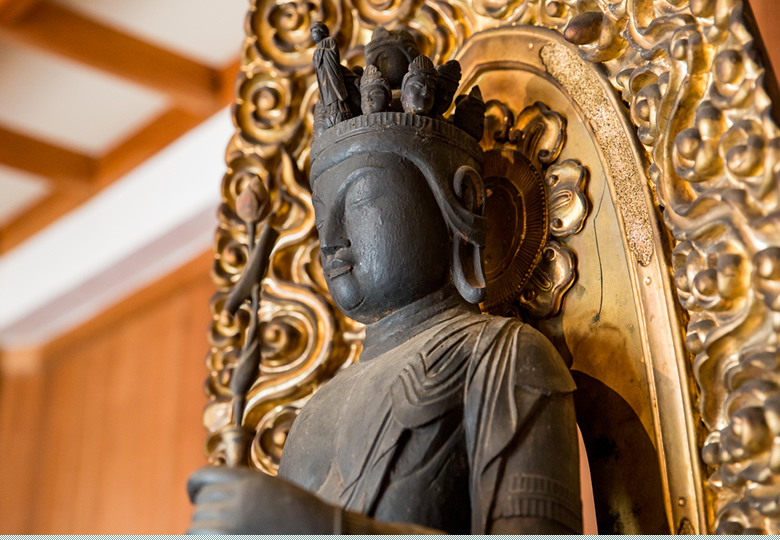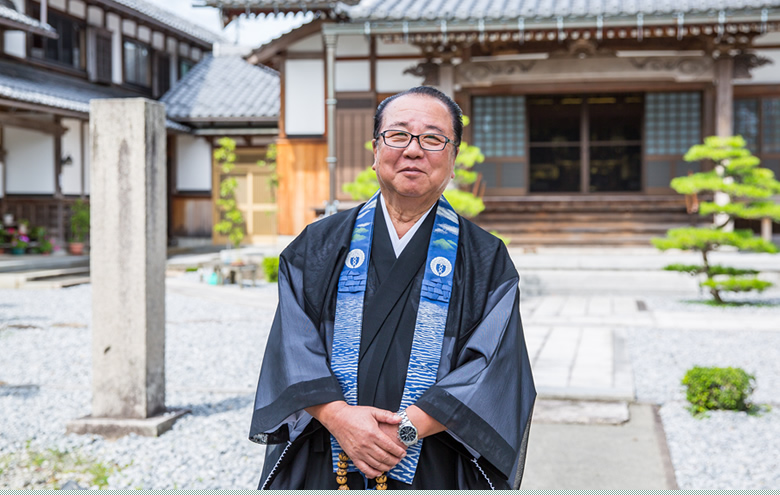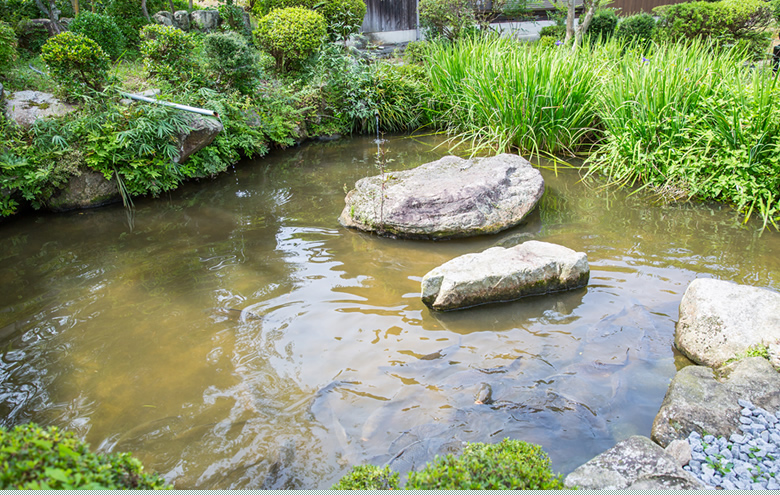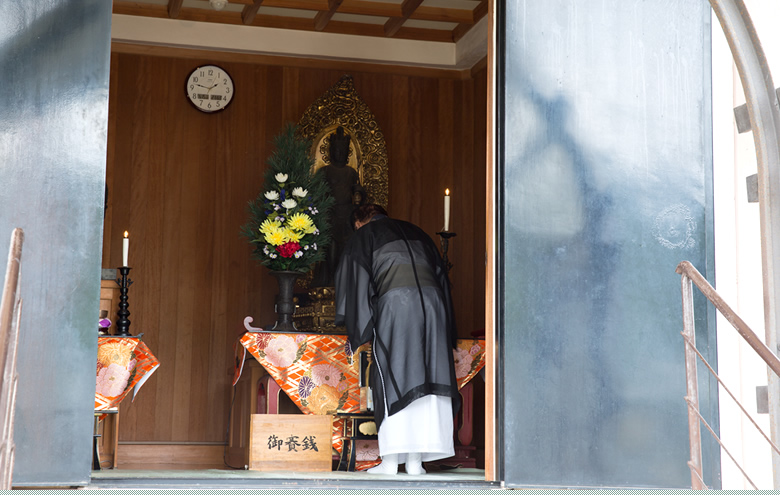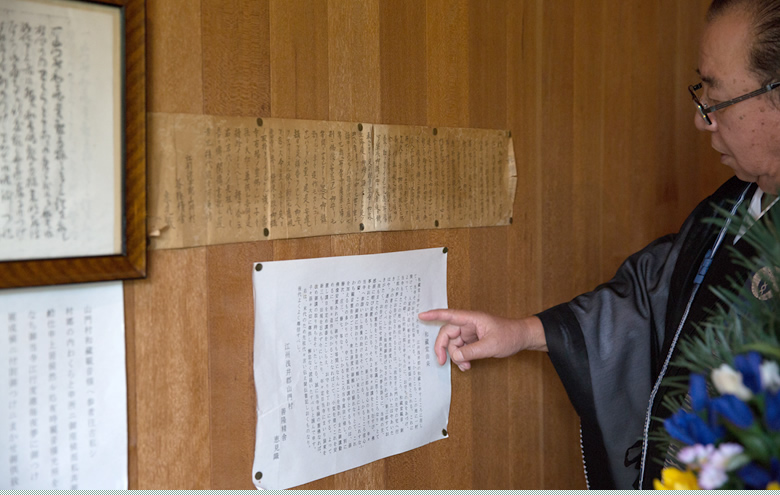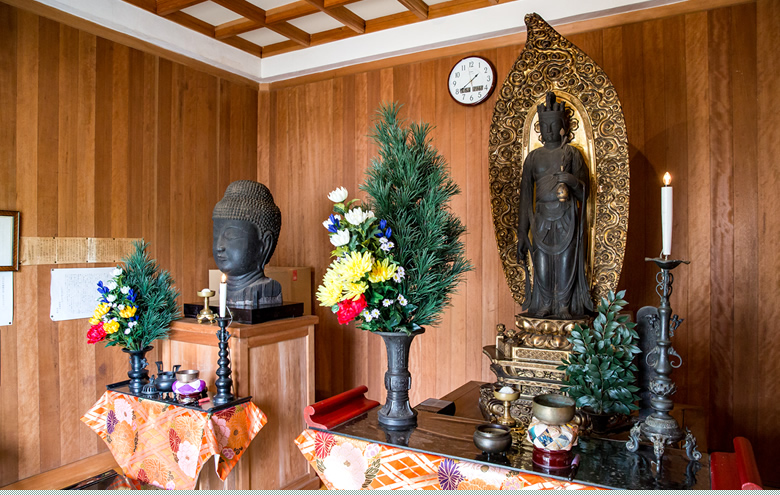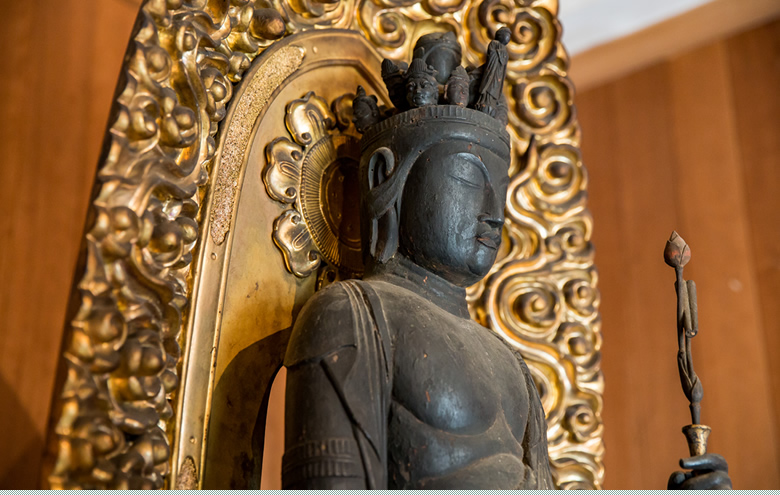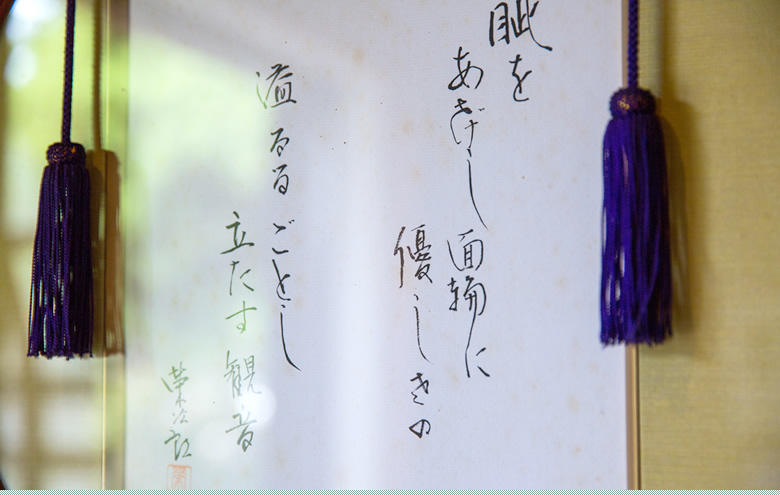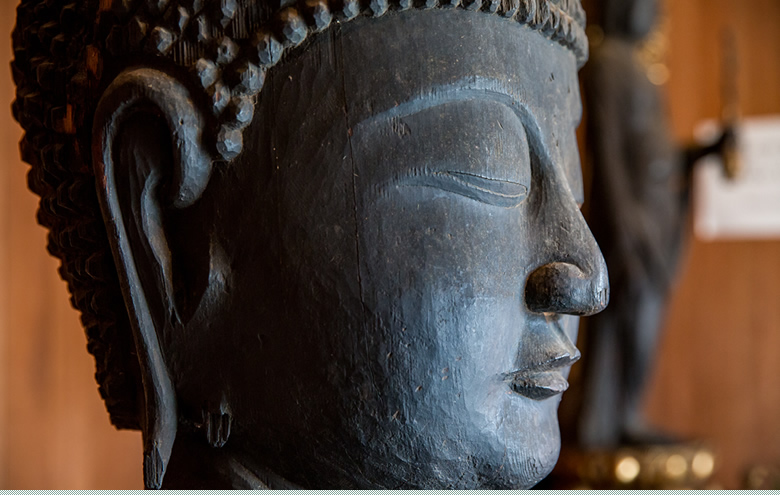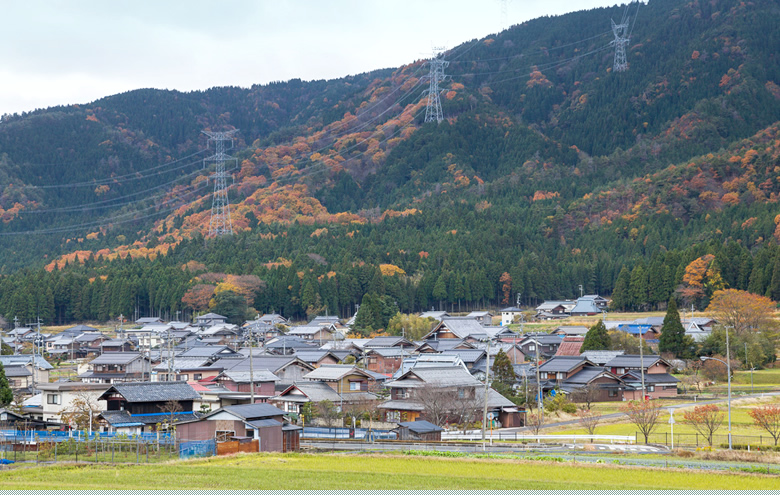The following interviews were held in August and September 2017
Nishiazai-cho is a town located on the northern tip of Lake Biwa. This is a place with deep history as a key point for traffic connecting Hokuriku and Kyoto/Osaka, and even now many images of the deity Kannon remain in the area. On this occasion we visited Zenryu-ji Temple in the village of Yamakado and spoke to the chief priest. Wakura-do Temple is located on the premises of Zenryu-ji Temple and enshrines images of an eleven-faced Kannon and the head of Amida Buddha, which have been protected by the chief priest and his family, as well as a religious association.

Does this Wakura-do Temple belong to Zenryu-ji Temple?
Chief priest: No, Wakura-do Temple is currently being protected by the Wakura-ko religious association, which consists of one temple and three homes of its followers. This is because Wakura-do Temple is of the Tendai sect of Buddhism, and Zenryu-ji Temple is Shin Buddhism. However, although it is now of the Bukkoji sect of Shin Buddhism, Zenryuji Temple was originally connected to the Tendai sect. I guess that much as has happened in its historical background.
Carp are swimming in the pond, and the grounds are meticulously maintained

Both the eleven-faced Kannon and the head of Amida Buddha date back to the late Heian period, so has Wakura-do Temple always been here?
Chief priest: It was included as part of Zenryu-ji Temple up to about 600 years ago, and was in a village called Sho about one kilometer south from here. The ancient document tells its history and mentioned that it was moved from there to Yamakado.
When I was a child, it was next to Shinmei-jinja shrine which is near here. It was made of wood and was so old that the roof was leaking, and I was greatly relieved that we were able to move it to the current storage room. Here it comes with complete security.

It’s been protected by generation after generation through the ages.
Chief priest: That’s certainly true. I deciphered this old manuscript written more than 100 years ago by the chief priest at the time.
The walls of the storage room are adorned with ancient documents
Chief priest: Revelations from Kannon when it was moved 600 years ago, as I mentioned earlier, as well as the background behind how the Wakura-ko was formed have been written down.

At the end of the composition it says that “Write down the legends and traditions that have been passed down generation after generation until the last generation. The generations to come ought to respect this very much.”
Chief priest: I’m the 17th generation, but if you count the 10 unspecified generations which lived through a period when there weren’t any records, then I’m actually the 27th generation. I think this must be passed down as long as we are able to continue the tradition.
Image of an eleven-faced Kannon (Late Heian period/Nationally-designated Important Cultural Asset/carved from the trunk of a single cherry tree)
Head of Amida Buddha (Late Heian period/Nationally-designated Important Cultural Asset/carved from the trunk of a single Japanese cypress tree)

Despite that, this image of Kannon still remains in a very beautiful condition.
Chief priest: The original red color from the time it was created remains on the sections of the hem of its garments, the lips, as well as the unopened lotus flower bud. It’s a color from 900 years ago.

About how many visitors come visit?
Chief priest: I would say between 500-600 people a year. We held an exhibition in Tokyo (Kannon No Sato No Inori To Kurashi Ten), so we have many visiting from the Kanto area. There are also many repeat visitors. Despite the fact that it is cared for by the religious association, since it is on the premises of Zenryu-ji Temple, we support most of the visitors. When I am here I will explain about it, and when I am not available my mother who is turning 94 will do her best to help.

This was also depicted in the Yasushi Inoue novel Stars and Festivals, right?
Chief priest: When he came to visit, I heard that my father assisted him. He sat still facing the image of Kannon it until it became dark out, then said “It’s hard to leave” and left.
Then, two years ago, Yasushi Inoue’s eldest son and his wife came over. They said, “We thought that we’d also complete the route of the images of Kannon that Dad had been introduced to…” and I thought, oh, I’m so happy to hear that.

It must be deeply moving to actually come here and face the image of Kannon with one’s own eyes.
Chief priest: Yes, I think so. I’d like visitors to be able to experience things like the wind that is blowing and the lifestyle of the villagers while they are visiting. It’s hard to explain this well, but since it has been protected for more than 900 years, the Buddha that is here can be seen in its original appearance.





